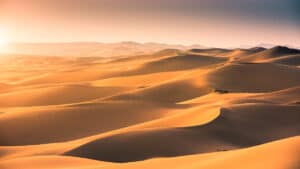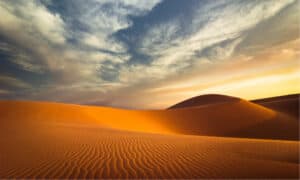When you think about animals that call the Sahara desert their home, your first thought might be reptiles. They can survive harsh conditions and little water. But a variety of beautiful birds thrive in the Sahara.
Birds in the Sahara are well-adapted to desert conditions. However, they live in areas with vegetation, so they have access to food, such as plants, fruit, flowers, and insects. In addition, they will compress their feathers to avoid holding unwanted heat and foraging in the early mornings and evenings to avoid the heat of the day.
Let’s discover the amazing birds that call the Sahara desert their home!
1. Common Ostrich
The flightless bird! While the common ostrich (Struthio camelus) can’t soar through the sky like other birds, they can run at high speed with the same elegance as a flying bird. Ostriches have long necks and legs essential for protecting themselves from predators. This helps them to spot predators before an attack happens and run around 40 mph to escape.
Ostriches are native to the Sahara and well-adapted to surviving desert conditions. They can flap their wings to cool down and have pores on their legs and neck, which keeps them cool. Ostriches also have long, thick eyelashes which protect their eyes from the wind and sand.

Ostriches are the largest birds in the world that can survive high temperatures and little water.
©MathKnight / Creative Commons – Original
2. Lappet-Faced Vulture
The lappet-faced vulture (Torgos tracheliotos) is Africa’s largest vulture and is native to the southern Sahara and throughout northern Africa and the Middle East. They are listed as threatened by the IUCN, and their numbers are declining due to habitat loss from agriculture, urbanization, and loss of food resources.
Lappet-faced vultures have incredibly strong beaks that can tear through the tough skin and tissue of carcasses. In addition to scavenging, the lappet-faced vulture eats small birds. They may even steal food from other animals.
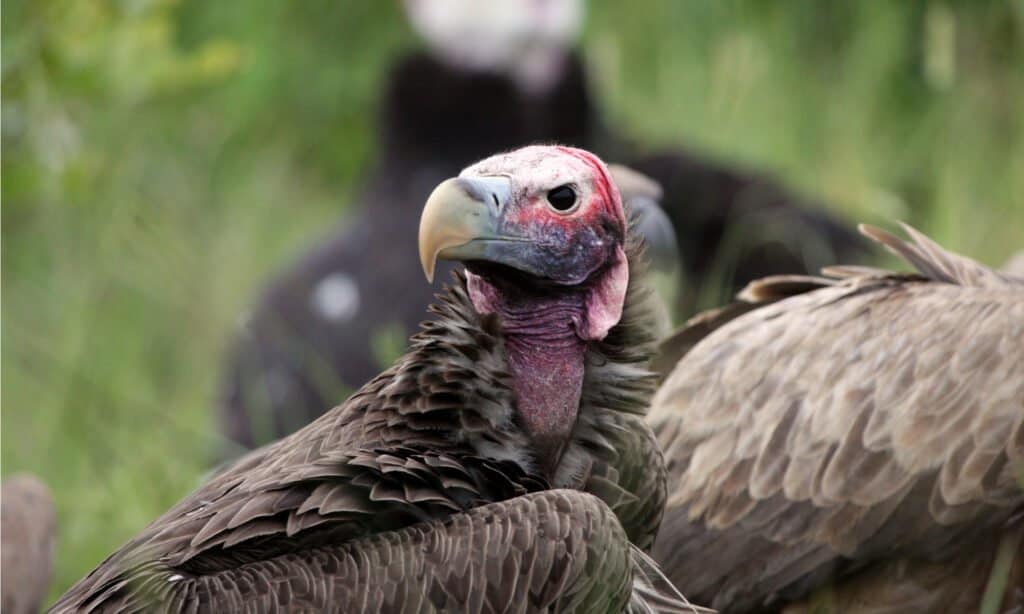
The lappet-faced vulture’s bill is powerful enough to tear open the toughest hides.
©Pictries/Shutterstock.com
3. Pharaoh Eagle-Owls
The Pharaoh eagle-owl (Bubo ascalaphus) is a beautiful owl that thrives in the arid regions of the western Sahara, Egypt, Sudan, Iraq, Iran, Israel, and more! These nocturnal owls feed on small creatures in the desert, such as snakes, lizards, scorpions, and small mammals and birds.
You can easily identify the Pharaoh eagle-owl by its large yellow eyes and disc-like face. They have black and cream-colored streaks on their head and underparts. Pharaoh eagle-owls are monogamous birds that pair for life and will remain in the same territory for as long as possible.

Pharaoh eagle-owls are monogamous birds that pair for life.
©Wirestock/iStock via Getty Images
4. Desert Sparrow
The desert sparrow (Passer simplex) is native to the Sahara Desert and found in sandy, arid areas with scattered bushes and trees. They spend most of their time in trees and forage for seeds on the ground. While they live in pairs, you may still find desert sparrows in small groups outside the breeding season.
Male desert sparrows are pale grey with a slightly sandy color. They have black lines around their eyes and on their wings’ tips. Females are a pale white, becoming even lighter on the underpart. Their sandy color acts as camouflage to match the desert surroundings and protect them from predators.
The Tuareg people of the Sahara believe the desert sparrow brings good news when they spot the bird near their homes.
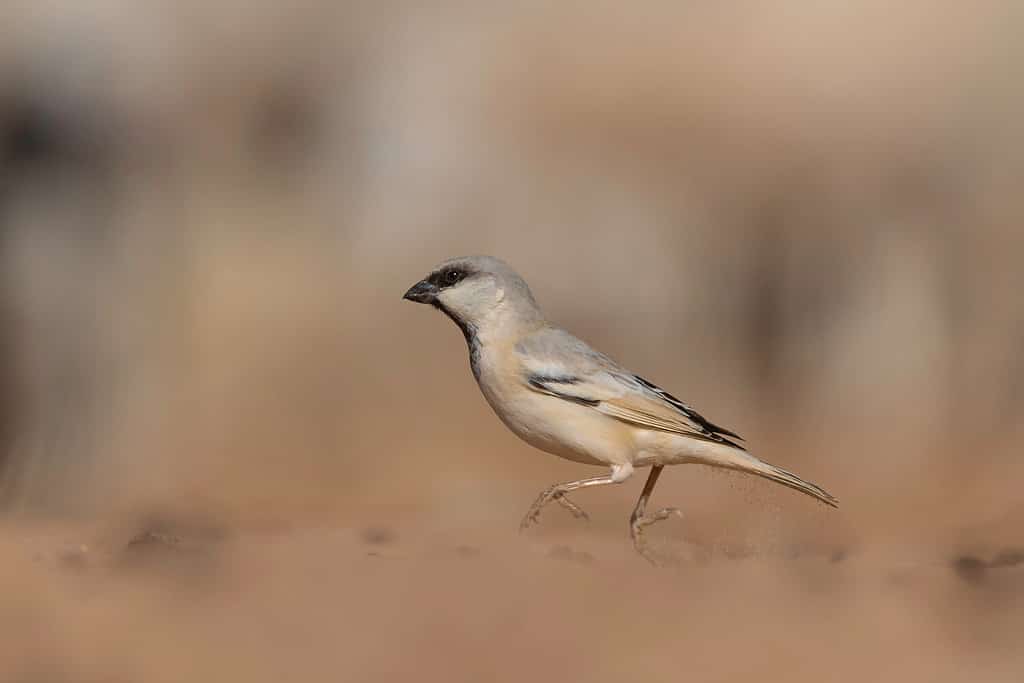
Desert sparrows are small birds that are a light sandy color with black lines around the eyes.
©toufik lemoufek/Shutterstock.com
5. Nubian Bustard
The Nubian bustard (Neotis nuba) is a medium-large bird found in the southern margins of the Sahara Desert and Sahel. They have long, thin legs and necks with black throats. In addition, Nubian bustards have a rufous crown — the reddish tuft of hair on the top of their head.
These opportunistic omnivores feed on small vertebrates, invertebrates, seeds, leaves, and fruit. Like other birds in the Sahara, Nubian bustards get their moisture from insects and nectar and are more active at sunset and sunrise to prevent losing moisture.

The Nubian bustard populates the southern margins of the Sahara Desert and Sahel.
©Special Collections of the University of Amsterdam, Public domain, via Wikimedia Commons – Original / License
6. House Bunting
The Sahara Desert has a challenging environment, but some resilient bird species are well-adapted to living in desert conditions. House bunting (Emberiza sahari) birds are native to the Sahara Desert in Algeria and characterized by the white and gray speckles on their neck and head. Both sexes have rusty-colored wings and underparts with black tips. The markings on the male’s body are more prominent than females, whose patterns are less clear.
House buntings mainly eat plants but will also feed on small insects. They are known to live close to humans and urban areas. The species is quickly spreading throughout Morocco. Traditionally, House hunting birds are sacred and freely move around occupied places around people, such as houses and shops.
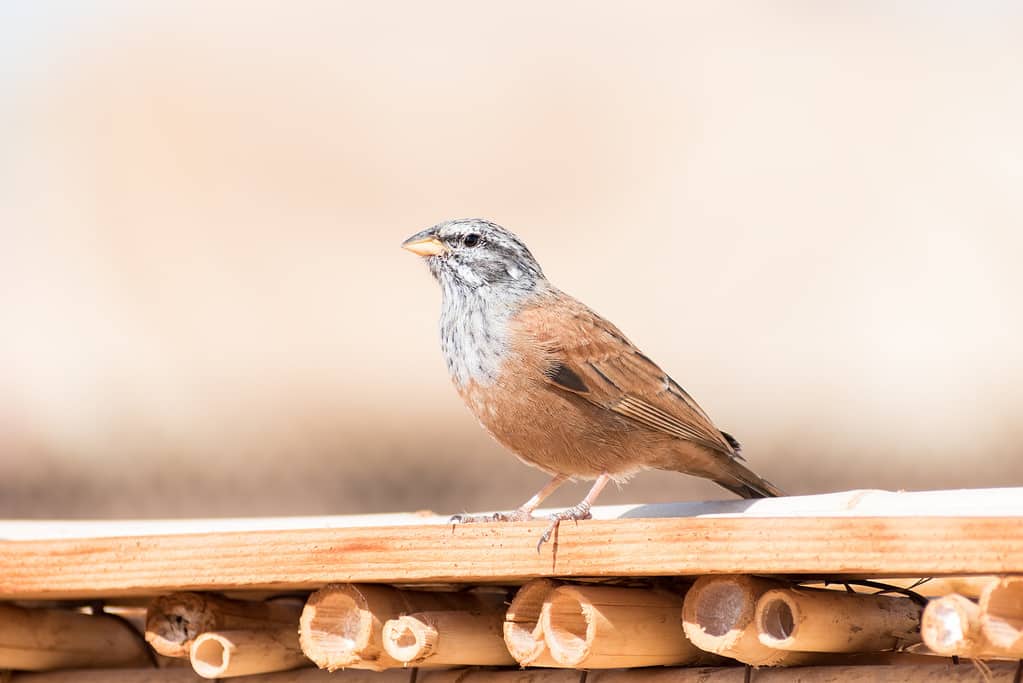
House bunting birds live in urban regions and are considered sacred in Morocco.
©Rich Higgins/iStock via Getty Images
7. Fulvous Babbler
Fulvous babblers (Argya fulva) are birds in the Sahara Desert and throughout northern Africa. These birds are little more than 9 inches long with sandy-white plumage. They have a blackish bill, white throat, and an elongated tail.
Fulvous babblers are often spotted in groups of 4 to 5 and feed on invertebrates, seeds, and berries. They depend more on water than other birds in the Sahara Desert, so they live in areas with water sources.
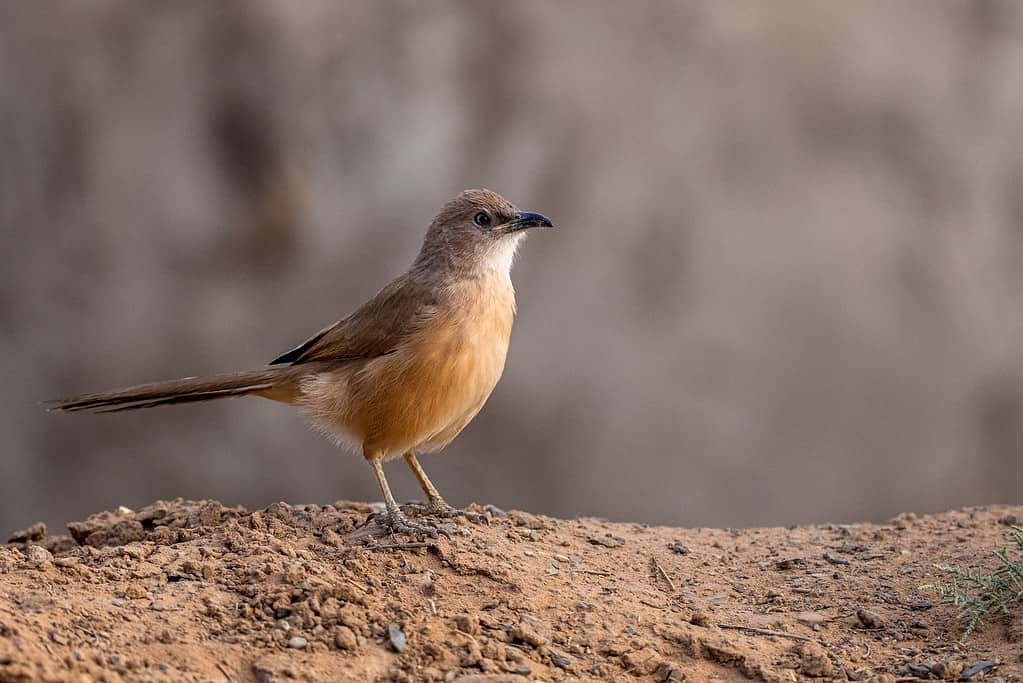
The delightful fulvous babbler has short wings and a long tail.
©SzymonBartosz/iStock via Getty Images
8. Desert Lark
The desert lark (Ammomanes deserti) can be found in the western Sahara, Western India, southern Morocco, and other areas of northern Africa. Their normal habitat includes arid, rocky areas, and they build their nests on the ground among stones and plant material. Desert larks feed on leaves, fruits, grass seeds, and insects, such as flies and grasshoppers.
They are not very sociable birds and are often found alone except during the breeding season. Desert larks are incredible birds of the Sahara and don’t require much water to survive the arid region.
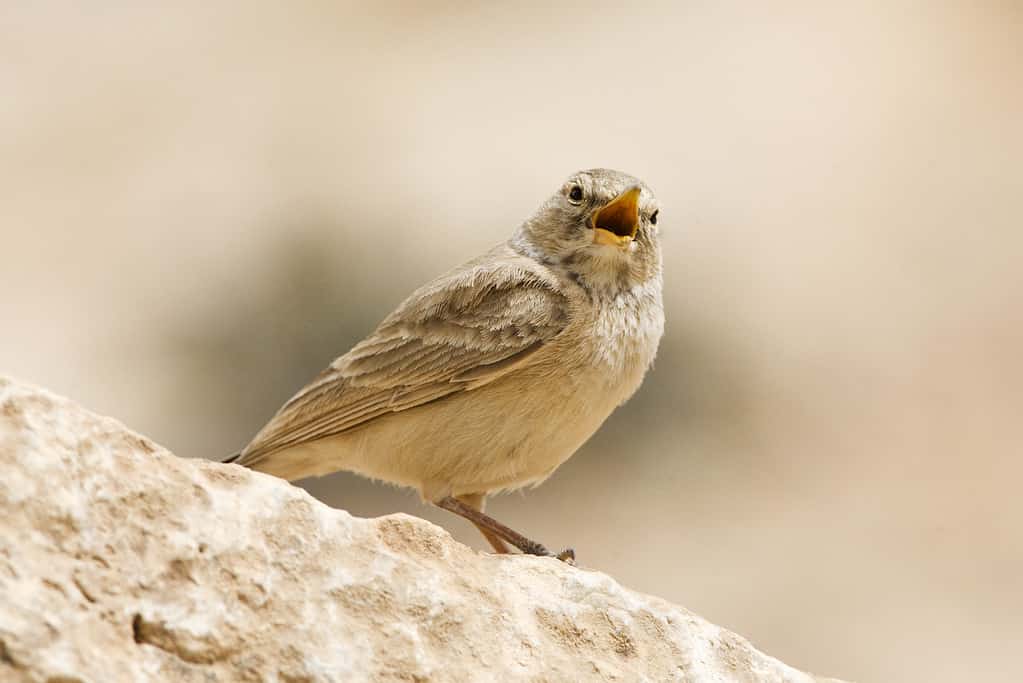
Desert lark gets their moisture from eating plants, fruit, seeds, and insects when water is scarce.
©Marc Guyt/iStock via Getty Images
Final Thoughts
The Sahara is the largest hot desert in the world, covering 3.5 million square miles through eleven countries in northern Africa. While the daytime in the summer brings relentless heat, the desert is filled with beauty.
Many birds in the Sahara Desert have adapted to their surroundings. From choosing the right time of day to forage for food to using their feathers to cool down their body, these birds are resilient.
Summary of Birds in the Sahara Desert
| Number | Bird | Distribution |
|---|---|---|
| 1 | Common Ostrich | Africa |
| 2 | Lappet-Faced Vulture | The Sahara Desert in Northern Africa |
| 3 | Pharaoh Eagle-Owl | Northern Africa and the Middle East |
| 4 | Desert Sparrow | The Sahara Desert in Algeria |
| 5 | Nubian Bustard | Southern margins of the Sahara Desert and Sahel |
| 6 | House Bunting | Sahara Desert in Algeria |
| 7 | Fulvous Babblers | Northern Africa |
| 8 | Desert Lark | Western Sahara, Western India, southern Morocco, and other areas of northern Africa |
The photo featured at the top of this post is © skander zarrad/ via Getty Images
Thank you for reading! Have some feedback for us? Contact the AZ Animals editorial team.





